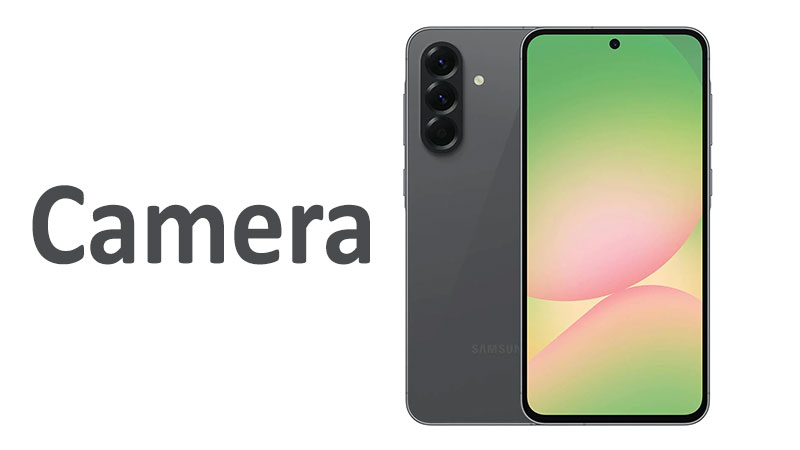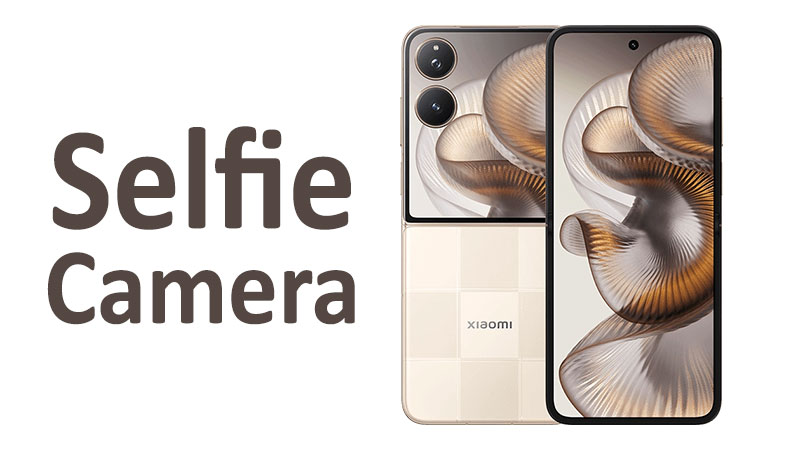The smartphone camera has become a critical feature for modern users. It’s no longer just about taking a picture. It’s about capturing life’s moments in stunning detail and sharing them instantly. For a long time, this level of quality was reserved for expensive flagship devices. However, the mid-range market has seen significant advancements. The Samsung Galaxy A56 camera aims to bring flagship-level photography to a more accessible price point. This detailed guide will delve into its camera system. We’ll explore its specifications, analyze its real-world performance, and highlight key features that make it a compelling choice.
We will cover every aspect you need to know. Whether you are a photography enthusiast or a casual user, this guide will help you understand the strengths and weaknesses of the Samsung Galaxy A56 camera. By the end, you’ll be able to make an informed decision. Let’s dive deep into what this popular mid-range smartphone offers.
The Samsung Galaxy A56 Camera: Specifications at a Glance
The Samsung Galaxy A56 features a versatile and powerful camera system. It has a triple-camera setup on the rear. There is also a single, high-quality front-facing camera. Understanding these specifications is the first step to evaluating its performance.
Rear Camera System:
- Main Sensor: 50MP Wide-angle lens, f/1.8 aperture, with Optical Image Stabilization (OIS) and Phase Detection Autofocus (PDAF). The large 1/1.56-inch sensor size and 1.0μm pixel size are significant. They help capture more light, which is crucial for low-light photography. OIS is a key feature here. It physically stabilizes the lens to prevent blur from camera shake. This is a game-changer for both photos and videos.
- Ultrawide Lens: 12MP ultrawide camera with a 123˚ field of view and an f/2.2 aperture. This lens is perfect for landscape shots and group photos. The wider perspective adds a dramatic and immersive feel to images. The resolution is an upgrade from some previous models, offering more detail.
- Macro Lens: 5MP macro camera with an f/2.4 aperture. This lens is designed for extreme close-up shots. It allows you to capture intricate details of small subjects. While often seen as a secondary lens, it can produce some creative and interesting results.
Front-Facing Camera:
- Selfie Camera: 12MP wide-angle lens with an f/2.2 aperture. This camera is a notable improvement over previous generations. It is designed to capture clear, detailed, and vibrant selfies. It also supports video recording at up to 4K resolution. This is a big win for vloggers and content creators.
In-Depth Performance Review: A Closer Look at Image Quality
The specifications look great on paper, but real-world performance is what truly matters. The Samsung Galaxy A56 camera delivers a strong, but not flawless, performance. It excels in certain areas while showing some limitations in others.
Daylight Photography: Vibrant and Detailed Shots
In good lighting conditions, the Samsung Galaxy A56 camera shines. The 50MP main sensor captures sharp, detailed images with Samsung’s signature vibrant color science. Photos are rich and have a high dynamic range. This means you can see details in both the brightest and darkest parts of a scene. The colors are pleasing and ready to be shared on social media without much editing. The OIS and PDAF ensure that your photos are consistently in focus and free from blur, even if your hands are a little shaky. The ultrawide lens also performs well in daylight. It produces decent shots with a wide field of view, though some softness may be noticeable at the edges.
Comparison with Competitors: In this price segment, the Galaxy A56 competes with devices like the Google Pixel 7a and the OnePlus Nord 4. The Pixel 7a often has a more natural color profile, while the A56 leans towards a more saturated, “pop” aesthetic. This is a matter of personal preference. The A56’s main sensor is highly competitive, offering excellent detail and dynamic range that can stand up to its rivals.
Low-Light and Night Photography: A Mixed Bag
Low-light performance is often the true test of a smartphone camera. The Galaxy A56’s large main sensor and OIS work together to capture more light and reduce blur. This helps produce decent nighttime photos. Samsung’s “Nightography” mode further enhances this by intelligently brightening scenes and reducing noise. Photos taken with the main lens in night mode are surprisingly bright and clear. However, the performance drops significantly with the ultrawide and macro lenses. They struggle to capture light, resulting in photos that are often noisy and lack detail. This is a common trade-off in mid-range phones.
Comparison with Competitors: The Google Pixel 7a, with its computational photography prowess, often holds an edge in low-light scenarios. It can produce more balanced and less noisy images. However, the A56’s main camera is a strong contender, and its performance is commendable for its price.
Video Recording: Smooth and Sharp
The Samsung Galaxy A56 is a capable device for video recording. The main and front cameras can record videos in 4K at 30fps. This is a great feature for content creators. The OIS on the main sensor is a huge asset. It helps produce smooth, stable footage, even when you’re walking or moving. The videos are sharp and have good color reproduction. The front-facing camera also provides excellent 4K video quality, making it a reliable tool for vlogging and video calls. However, there are some limitations. There is no 4K 60fps option, which some competitors offer. Additionally, switching between lenses while recording video can be a bit clunky.
Comparison with the Galaxy A55: A key upgrade from the previous model, the Galaxy A55, is the improved front camera. While the A55 had a higher megapixel count (32MP), the A56’s new 12MP sensor with a larger pixel size and improved processing delivers better-quality selfies and video. This highlights the fact that more megapixels don’t always mean better quality. The A56’s new front camera is a noticeable improvement in overall performance.
The Macro Camera: A Niche Feature
The 5MP macro camera is a nice addition, but it’s not the main selling point. It can capture very close-up shots, but the fixed focus and small sensor size make it a bit finicky to use. You often get better, more detailed results by simply cropping an image taken with the main 50MP sensor. This is a feature that buyers should be aware of but not necessarily base their purchase decision on.
Key Features and Software Enhancements
Beyond the hardware, Samsung has packed the Galaxy A56 with several software features to enhance the photography experience.
- Pro Mode: This feature gives users manual control over settings like ISO, shutter speed, and white balance. It allows more experienced photographers to fine-tune their shots.
- Portrait Mode: The A56’s portrait mode is powered by improved AI. It offers a more refined bokeh effect. This creates a professional look by blurring the background and keeping the subject in sharp focus.
- Object Eraser: A feature borrowed from Samsung’s flagship phones. The Object Eraser allows you to remove unwanted objects or people from your photos. It’s a powerful and fun tool for photo editing directly on your phone.
- AI Camera Filters: The camera uses AI to identify the scene and adjust settings automatically. It can also apply custom filters and effects. These features make it easy for anyone to take great photos without technical knowledge.
Pros and Cons of the Samsung Galaxy A56 Camera
To provide a balanced view, here is a summary of the pros and cons of the Galaxy A56 camera system.
Pros:
- Excellent Main Camera: The 50MP sensor with OIS and PDAF is a standout. It delivers sharp, colorful, and stable photos and videos in good lighting.
- Great Front-Facing Camera: The new 12MP selfie camera is a significant upgrade. It takes high-quality selfies and supports 4K video recording.
- Robust Video Stabilization: The OIS on the main lens makes for very smooth and usable video footage.
- Useful AI Features: The inclusion of flagship-level AI features like Object Eraser adds significant value.
- Versatile Camera System: The combination of wide, ultrawide, and macro lenses provides a variety of shooting options.
Cons:
- Mediocre Low-Light Performance on Ultrawide/Macro: The secondary lenses struggle in low light. This is a common weakness in this price bracket.
- No Telephoto Lens: The lack of a dedicated telephoto lens means that optical zoom is not an option. Digital zoom can result in a loss of quality.
- No 4K 60fps Video: Some competitors offer this higher frame rate. This might be a dealbreaker for users who need it.
- Macro Lens is a Gimmick: The 5MP macro lens is not very practical. You can often get better results by cropping a photo from the main sensor.
- Processing Can Be Overly Sharp: In some cases, Samsung’s image processing can apply too much sharpening. This can make details look a bit unnatural when viewed on a larger screen.
Conclusion
The Samsung Galaxy A56 camera is a powerful and well-rounded camera system. It offers a strong photography and videography experience for its price. Its main 50MP sensor is truly the star of the show. It captures stunning photos and videos, especially in well-lit conditions. The inclusion of OIS is a huge advantage, providing stable and blur-free results. The new 12MP front-facing camera is another major highlight, delivering excellent selfies and high-resolution video.
However, the camera system is not perfect. The secondary ultrawide and macro lenses are less impressive, particularly in low-light environments. The absence of a dedicated telephoto lens is also a drawback when compared to some rivals. Despite these minor shortcomings, the Galaxy A56 provides a compelling camera package.
For the average user, the Samsung Galaxy A56 camera is more than capable of handling everyday photography needs. It delivers high-quality results that are perfect for social media and personal memories. For those who prioritize video and selfies, the 4K recording capabilities and excellent front camera make it a fantastic choice. If you are looking for a phone with a great primary camera, solid video capabilities, and useful software features without breaking the bank, the Galaxy A56 is a top contender. It is a prime example of how Samsung is democratizing high-end camera technology.
FAQ
Yes, the main 50MP wide-angle camera on the Samsung Galaxy A56 features OIS. This helps to reduce blur in photos and makes videos much smoother.
Yes, both the main rear camera and the front-facing selfie camera can record video at up to 4K resolution at 30 frames per second (fps).
No, the Samsung Galaxy A56 does not have a dedicated telephoto lens. Zooming is done digitally, which can result in a loss of image quality.
The main camera setup is largely the same, but the Galaxy A56 features a new 12MP front-facing camera. This new sensor offers improved selfie and video quality compared to the 32MP camera on the A55.
The 5MP macro camera is designed for taking extreme close-up shots of small objects. It allows you to get very near to your subject to capture fine details.



